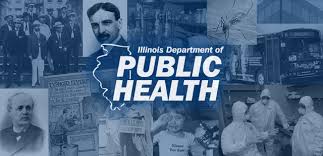Key Points
- Below normal spring flood risk for the Mississippi River.
- Near to below normal spring flood risk for local tributary rivers.
Details
The spring flood risk is below normal for the Mississippi River, and near to below Normal for local tributary rivers across the NWS Quad Cities Hydrologic Service Area.
Some factors contributing to the current risk levels include:
1) Lack of a snowpack in the local area or in the headwater areas in Minnesota and Wisconsin.
2) Normal to below normal soil moisture levels in the local area will provide more potential storage for spring rains.
3) Lack of hard frozen soils in the local area or in the headwater areas to the north.
4) Local streams are currently flowing at or slightly above the normal level.
.Key Takeaways…
* Even though the overall risk of spring flooding is near to below average in the NWS Quad Cities HSA, this does not guarantee that high impact flooding will not occur. The severity of any flooding will be determined primarily by changes in the key factors mentioned above. In addition, we will be monitoring the outlooks for spring precipitation to see if that could become a contributing factor this year.
* Current snow cover and snow water equivalent are well below normal across much of the local area, which decreased the overall flood threat. In addition the snow water equivalent in the headwaters of the upper Mississippi River basin are well below normal, which will further decrease our likelihood of major impacts on the Mississippi River.
* Widespread normal to below normal soil moisture levels in the local area increases the capacity of the soils to soak in spring precipitation and which will significantly mitigate the near term flood risk as well as decrease the risk for prolonged flooding. We will continue to monitor soil moisture conditions as they have begun to moisten over the past months.
* A significant snow melt occurred locally at the beginning of February and caused flood concerns across parts of western Illinois. This snow melt contributed to moistening the sols and raising river levels through the Quad Cities’ HSA, which contributes to an increase in risk along area waterways. If forecasted warmer and drier conditions persist throughout the rest of February, this will likely mitigate much of that threat increase, reducing our spring flood threat further in future outlooks.
Many factors are considered when determining the overall flood risk for the upcoming spring season. The combination of these influences factor into the final determination. These factors are discussed in detail in the next few tabs and also in the Statistical Hydrological Outlook linked below.
2024 Spring Flood Outlook – Updated February 15, 2024 (weather.gov)
***Courtesy of the National Weather Service***














